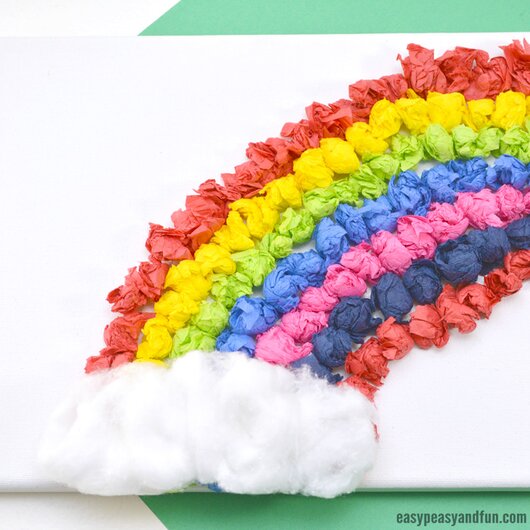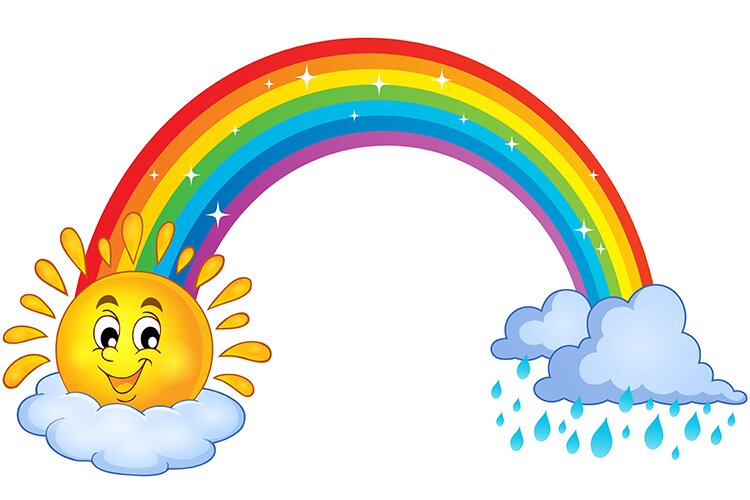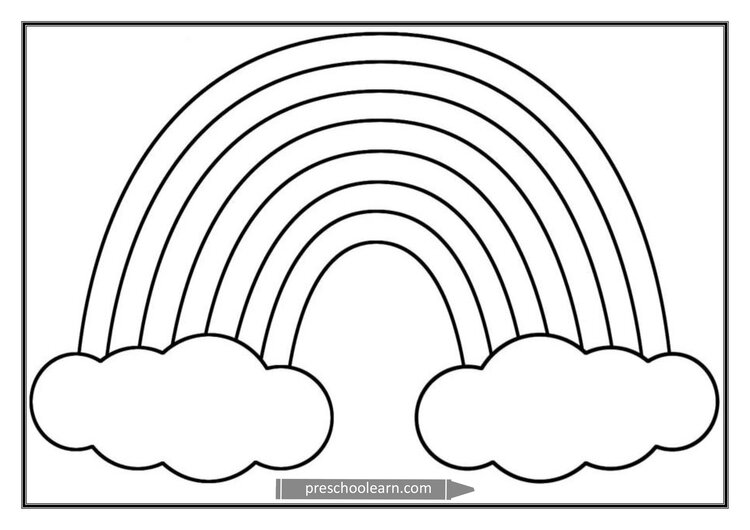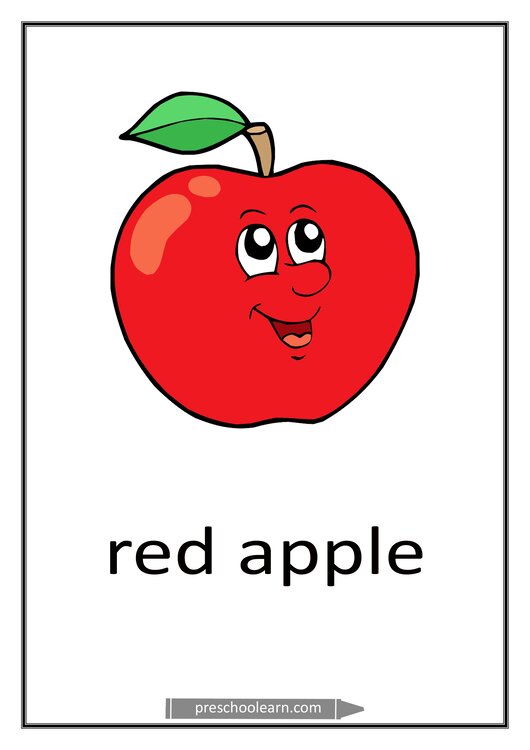Kindergarteners will learn how a rainbow is made and what colors it consists of. They will listen to a poem entitled “A Rainbow”, perform the experiments allowing to repeatedly observe rainbows – both the real one made of a combination of light and water, and a sweetie made of colorful candies. They will also develop logical thinking and imagination by creating funny sentences from the first sounds of the colors of the rainbow, and will also make an artwork entitled “Rainbow”.
Materials:
a poem entitled “A Rainbow”, tissue paper ribbons strips in 7 rainbow colors (red, orange, yellow, green, blue, indigo, violet), classical music, “Rainbow” picture card, colored paper strips in 7 rainbow colors – one set for each child, a song entitled “Rainbow Colors”, mirrors, bowls of water, flashlights, white A4 sheets, glasses with water, flower sprinkler, “Skittles”, plate, gymnastic rings/discs/sashes – as many as there are children, tissue paper in 7 colors of the rainbow, cotton wool, glue, templates for artwork for each child, colorful feathers.
Activity description:
1. “Hello to those who …” – greeting – children and their teacher sit in a circle. Teacher pronounces the next sentences, and children who are wearing something in a given color wave at everyone and touch the garments in the mentioned color. Teacher comes up with new sentences until all children are greeted:
- Hello to those who are wearing something blue,
- Hello to those who are wearing something red,
- Hello to those who are wearing something green,
- Hello to those who are wearing something white,
- Hello to those who are wearing something yellow.
2. “A Rainbow” – listening to a poem – children sit comfortably in a circle and their teacher reads the poem.
A Rainbow
A rainbow is formed by the sunlight,
Shining through rain drops so small.
The rain bends the light from the sunshine,
And colors the sky for us all.
Red, orange, yellow, green,
Blue, indigo, violet is what we see.
Rainbow colors,
Are made with light bending you see!
Next, teacher asks kindergarteners:
- How is a rainbow formed?
- What are the colors of the rainbow?
- Have you ever seen a rainbow?
- When do you see a rainbow in the sky?
3. “The rainbow” – movement activity – teacher reads the rhyme and shows the correct gestures. Children imitate them.
The rainbow
One day the sun was shining bright – hold up a right hand like blocking the sunlight
But some clouds came along and it became black as night – hold up left hand for the clouds
Then the rain began to sprinkle onto the ground – wiggle fingers for the rain coming down
And soon it was raining all over the town – wave all fingers back and forth
But when the clouds had passed on by – move both hands to one side
A big beautiful rainbow stretched across the sky – make a rainbow arc with your hands
4. “My rainbow” – didactic activity – teacher shows children a picture of a rainbow and gives each child 7 strips of paper in the colors of the rainbow (red, orange, yellow, green, blue, indigo, violet). The task of the children is to take a good look at the picture with the rainbow and arrange their stripes in exactly the same order. After completing the task, teacher asks selected children to give the names of the colors in the foreground. Then, teacher encourages children to create sentences that will make it easier to remember the order of the colors of the rainbow (the first sounds of the next words correspond to the first sounds of the names of the colors of the rainbow), e.g. rapid owl yanked great bear indeed vividly.
5. “Rainbow” – movement activity – teacher distributes the ribbons/tissue strips to children. Children move around the room to the rhythm of the song entitled “The Rainbow Colors”. When the music stops, children line up around the circumference of the circle in accordance with the colors of the rainbow, i.e. a child with a red ribbon/tissue paper strip stands next to a child with an orange tissue/tissue strip, then a child with an orange ribbon/tissue strip yellow, etc. Children create the “rainbows”. Then, teacher checks the correctness of the completed task. Repeat this game several times.
6. “Rainbow experimenting” – didactic activity – teacher asks children to carry out several experiments allowing to observe different rainbows. During the experiments, teacher explains to children that a beam of white light is reflected from the mirror. When it comes out of water, it breaks down. A rainbow is created as a result of the refraction and reflection of sunlight in water droplets. We see it in the form of a colored arc against the background of rainy clouds or after rain. It also forms in water fog near waterfalls and fountains. It disappears when all water droplets have fallen or evaporated.
- “Rainbow in the water” – children pour water into the bowl and put the mirror inside so that it rests against the wall of the bowl. Then, they direct the light of the flashlight to the part of the surface under the water. They observe a rainbow on a piece of paper held behind a flashlight.
- “Rainbow on the table” – children put a piece of paper on the table, holding a glass of water about 10 cm above the paper. A rainbow should appear on the table after a while.
- “Rainbow in the air” – teacher sprays water with a flower sprinkler in place of sunlight. Children watch carefully and try to find rainbows.
- “Candy Rainbow” – teacher places candies on the edge of the plate and pours some water in the center. After a while, children can observe the “watery rainbows”. Of course, after the observation is finished, children can eat candies – candies will soil their fingers.
7. “Color game” – movement activity – teacher places gymnastic rings/discs/sashes on the carpet and distributes colored ribbons/tissue paper strips to children. Children stand in a circle of their choice and teacher mentions the name of the color and children who have a ribbon/strip of tissue paper of that color change places. When teacher says: “rainbow” – all children change their places. Repeat this game until all colors are replaced.
8. “Rainbow” – artwork – teacher presents and explains to children the steps needed to do the artwork. He/she pays special attention to make sure that they are in the right order before sticking the strips. After the task is over, children tidy up their workplaces. Then, children must sit in a circle on the carpet and present their works.

Demonstration image – the balls are stuck in the wrong order!
- Roll tiny pieces of tissue paper into balls.
- Place one ball on one arc in accordance with the colors of the rainbow – after teacher checks the correct order of the colors on the arches – glue one ball at a time (it is important that children stick the balls right away to avoid the situation that something will move and then wrongly stick the rest of the balls ).
- Glue the whole rainbows with balls.
- Glue cotton wool on the clouds.
9. “Colorful feathers” – breathing and movement activity – teacher distributes one colored feather to children. Children move around the room to the rhythm of the song entitled “The Rainbow Colors”. When the music stops, children stop and blow on their feather so that the feather does not fall to the floor. Repeat this game several times.
10. “Rainbow Colors” – singing a song – children sing the song with their teacher.
Attachments:
Picture card for the “Rainbow” activity
Template for an artwork entitled “Rainbow”
Picture cards for a song entitled “Rainbow Colors”
Pages used:
- https://funlearningforkids.com/skittles-rainbow-science-activity-for-kids/ – “Candy Rainbow” experiment
- https://www.easypeasyandfun.com/tissue-paper-rainbow-canvas-art/ – an artwork entitled “Rainbow”
- https://www.youtube.com/watch?v=SLZcWGQQsmg – a song entitled “Rainbow Colors”



